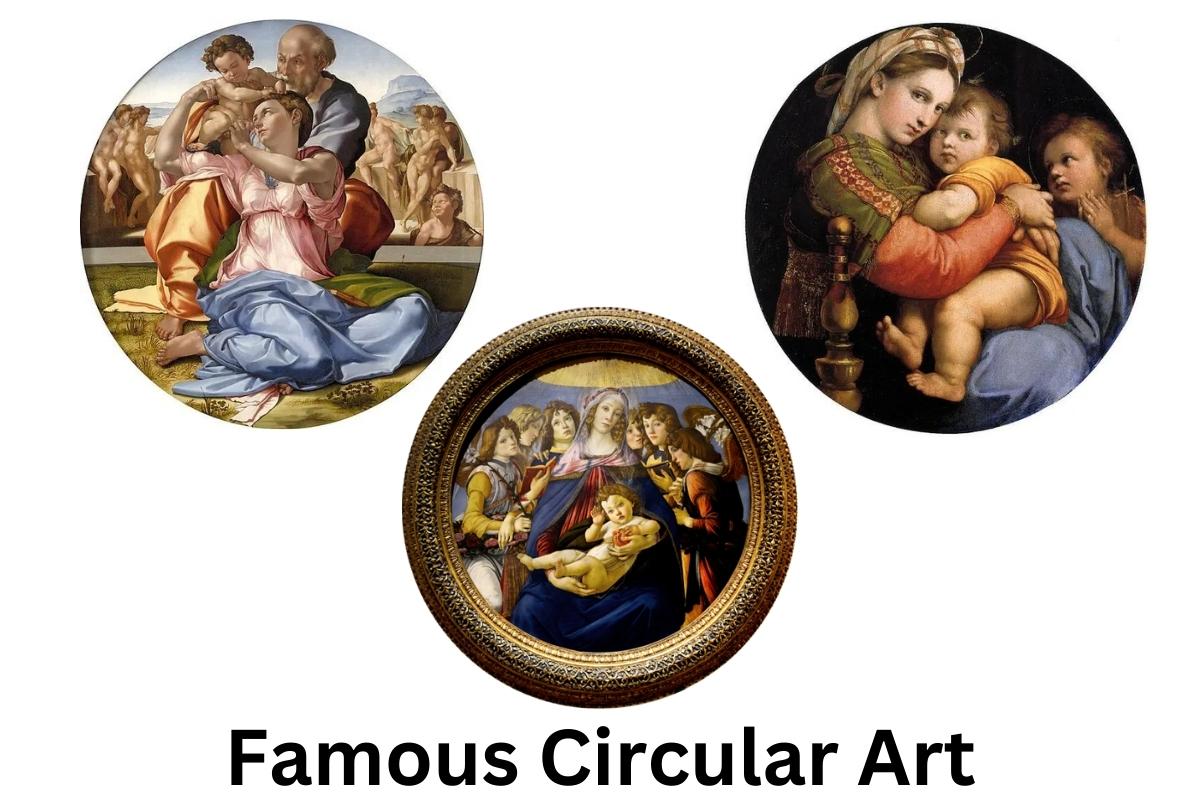Circular art, such as a painting or a sculpture, is referred to as a tondo (plural “tondi” or “tondos”), which is a phrase that originated in the Renaissance.
This word comes from the Italian word rotondo, which literally translates as “round.”
The phrase is not typically used in English for small round paintings; rather, it is reserved for paintings that are over approximately 60 centimeters (two feet) in diameter.
As a result, it excludes a large number of round portrait miniatures; however, the threshold is rather lower for sculpture.
A roundel is a term that can be used to refer to either a circular or oval relief sculpture.
Tondi were frequently employed to depict mythical or religious themes, and they were frequently installed in places of worship such as churches and other religious buildings.
Below is some of the most famous circular art from many of the great masters that is currently on display.
Famous Circular Art
1. Doni Tondo – Michelangelo
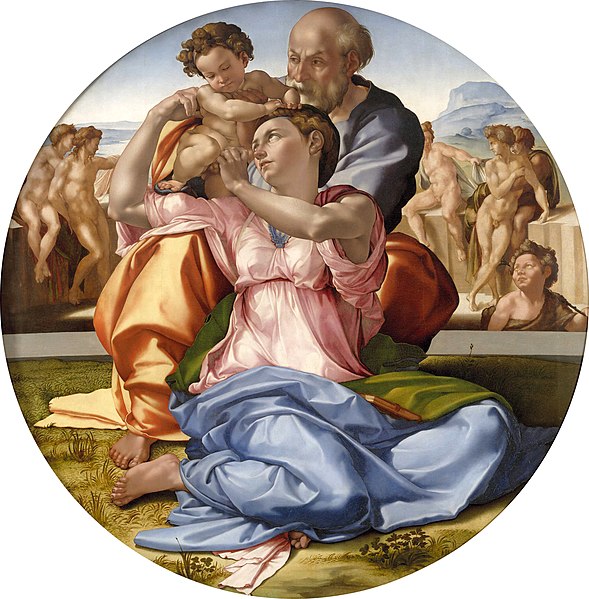
Likely commissioned by Agnolo Doni to commemorate the occasion of his marriage to Maddalena Strozzi, a member of a prominent Tuscan family, the Doni Tondo is a work of renowned Renaissance artist Donatello. Probably done to mark the happy occasion of his marriage.
Tondo is the Italian term for “round,” which describes the shape of this artwork well. Household-related subjects were common in Renaissance tondos.
The Doni Tondo can be traced back to Michelangelo’s first journey to Rome and his return to Florence. The Doni Tondo was probably made around this time. It was at this period that the famous Renaissance sculptor was creating his version of David.
It is the sole known painting in Florence of Michelangelo, where it enjoys widespread renown as a masterpiece of Italian Renaissance art. This masterpiece is titled “Adam’s Origin.”
2. Madonna della Seggiola – Raphael
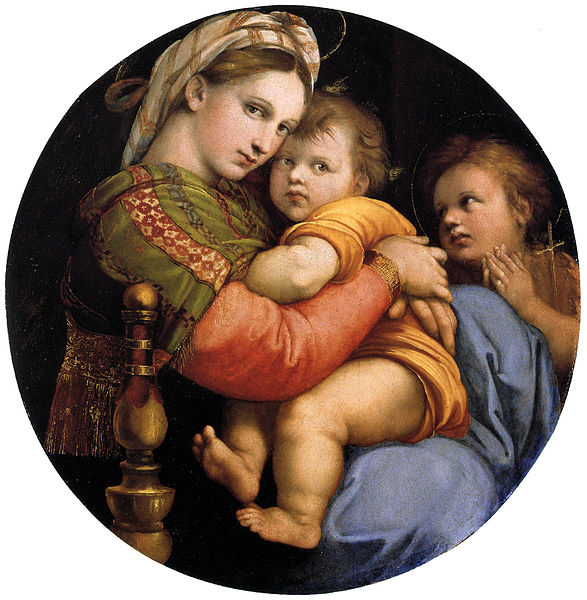
A painting of the Virgin Mary by Raphael, titled The Madonna della Seggiola or The Madonna della Sedia, was completed between 1513 and 1514. This piece is currently housed in the Palazzo Pitti Collection in Florence, Italy.
Whoever commissioned the painting has long been forgotten, although the Medici family has owned it since the 16th century. Although its journey to Palazzo Pitti has been documented, the painting’s original commissioner remains a mystery.
Mary is depicted holding the infant Jesus on her lap as she reclines in a chair. In the background, a young John the Baptist watches solemnly. The Madonna della Sedia is widely regarded as one of Raphael’s finest works, and is often included in lists of the artist’s best-known pieces.
The painting also showcases Raphael’s use of the tondo compositional form and his authentic portrayal of the Madonna.
3. Alba Madonna – Raphael
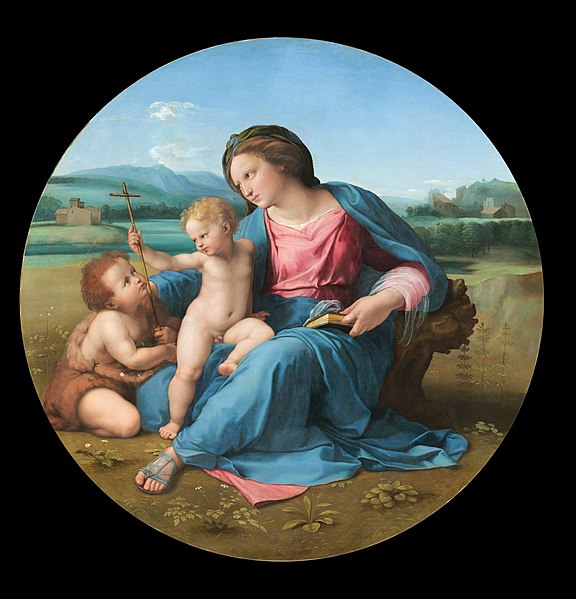
The Alba Madonna is a painting by the Italian High Renaissance artist Raphael that was completed around the year 1511 and depicts Mary, Jesus, and John the Baptist in a landscape that is typically found in Italy. The painting was painted with oil on wood that was then transferred to canvas.
After spending the previous century and a half in Italy, it was part of the collection of the Dukes of Alba in Spain until the year 1836, when it was sold to Nicholas I of Russia. Since then, it has been a prominent exhibit at the Imperial Hermitage Museum in Saint Petersburg.
The government of the Soviet Union made a covert sale of the painting to Andrew W. Mellon in 1931, and it has been in the collection of the National Gallery of Art in Washington, D.C. since 1937.
4. Madonna of the Pomegranate – Sandro Botticelli
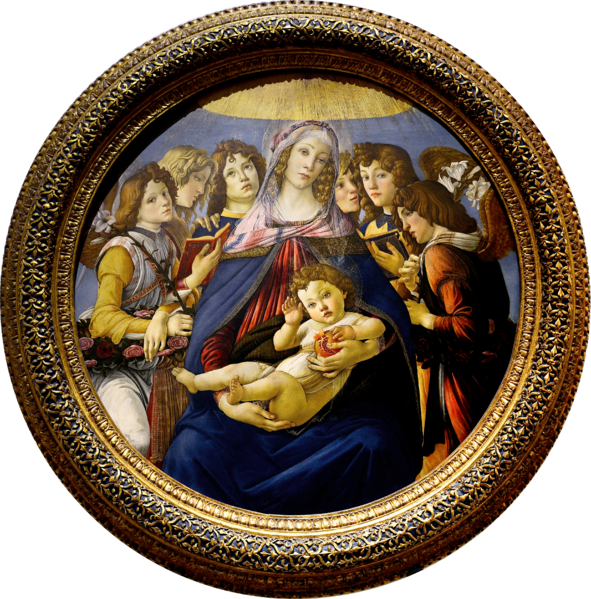
Sandro Botticelli completed the painting known as the Madonna of the Pomegranate in the year 1487 using tempera paint on a panel made of wood.
The Virgin Mary and the infant Jesus are the central figures in the tondo, and they are flanked on each side by angels who form a symmetrical pattern. This draws the viewer’s attention to these two figures.
It is described as a “naturalistic style,” and it was prevalent during the Renaissance period. Botticelli’s use of tempera grassa gives the characters a real look. The Virgin Mary is tenderly cradling baby Jesus in her right arm while simultaneously clutching a pomegranate in her left hand.
Within the context of the religious work, the meaning of the pomegranate as it is depicted might be interpreted in a number different ways. Due to the fact that painters during the Renaissance period frequently copied the work of more well-known artists in order to hone their own craft, there are a great deal of copies of the Madonna of the Pomegranate.
The picture can be seen at the moment in the Uffizi Gallery, which is located in Florence, Italy. The Prado Museum houses a picture by Fra Angelico that is frequently referred to by the same title.
5. Taddei Tondo – Michelangelo
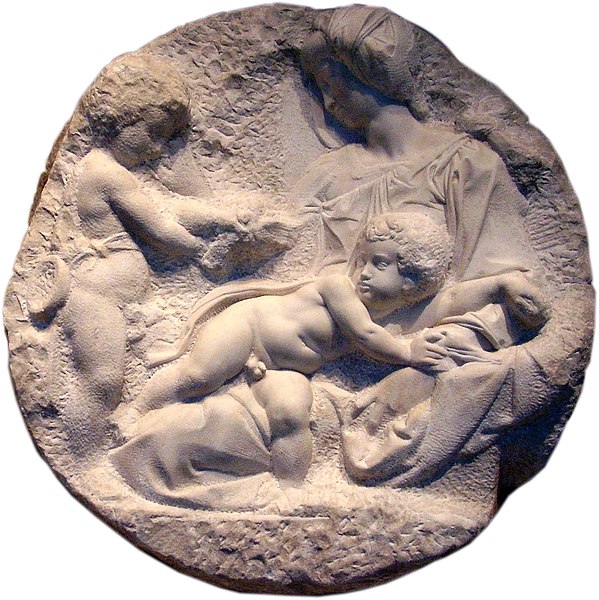
The Taddei Tondo, also known as The Virgin and Child with the Child Saint John, is a marble relief tondo (circular composition) that was created by the Italian Renaissance artist Michelangelo Buonarroti. It depicts the Madonna and Child along with the infant Saint John the Baptist.
It is the only marble sculpture by Michelangelo that can be found in the Great Britain and it can be found in the permanent collection of the Royal Academy of Arts in London. The piece not only serves as an excellent illustration of his carving technique, but it also packs a significant emotional and narrative wallop.
Prior to Michelangelo’s relocation to Rome in 1505, the tondo was created during the artist’s stay in Florence.
6. Madonna and Child with Cherubin – Andrea della Robbia
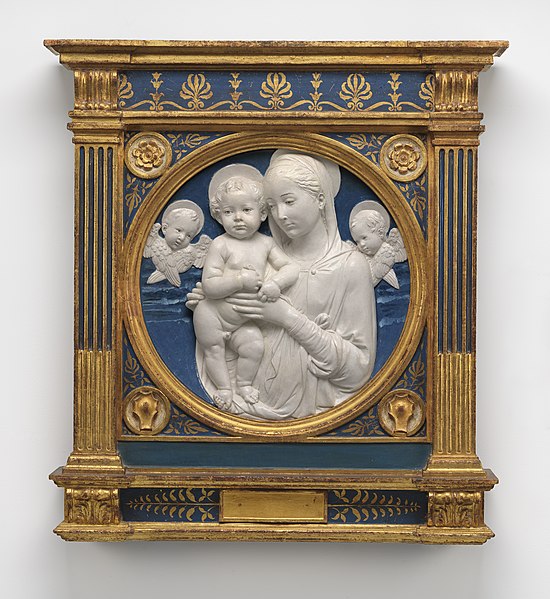
Tondo paintings, often show the background, while tondo relief carvings on the other hand, tend to show only the foreground.
Glazed terracotta tondi, sometimes wrapped in a wreath of fruit and foliage, were made by Andrea della Robbia and his family members for immuring in a stuccoed wall.
Tondos of glazed terracotta infants in swaddling garments on plain blue backgrounds were supplied by Andrea della Robbia for placement in the spandrels of the arches at Brunelleschi’s Hospital of the Innocents in Florence, 1421–24.
7. Madonna of the Magnificat – Sandro Botticelli
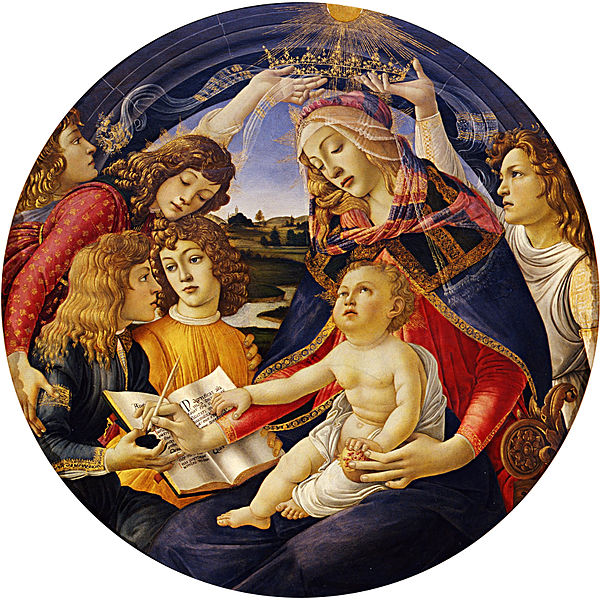
Sandro Botticelli, an Italian Renaissance painter, painted the Madonna of the Magnificat, a tondo-shaped painting of the Virgin Mary praying. The work’s first title, Madonna del Magnificat, was a reference to the subject matter. The Virgin and Child Encircled by Five Angels is another name for this artwork.
In the tondo, Mary is holding a pomegranate in her left hand while she writes the Magnificat with her right. The Christ Child is sitting on her lap as two angels encircle and crown her. It is now on display in Florence, Italy, in the Uffizi Gallery.
The artwork’s origin and date are both a mystery, but we do know that it was acquired by the Uffizi Gallery from a private collector in 1784. It could have been developed at one of the many monasteries that Archduke Pietro Leopoldo ordered to be suppressed.
Multiple versions of the image exist, and some of them can be viewed in illustrious museums and libraries including the Louvre and New York’s Pierpont Morgan Library.
The Louvre copy lacks the angel on the far left who was crowning Mary; this was done so that the topmost angel in the trio on the far left may spread his wings more dramatically.

